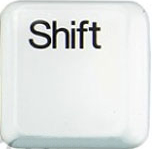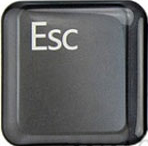User:Michaela/Understanding copyright/ copyleft /copyfarleft
========================================
Essay #2 COPYRIGHT/ SHIFT
========================================
key words: intellectual property, copyright / creative commons / copyleft / copy-far-left
The right of property is created by the labour involved in the production.
A definition of property according to John Locke, one of the fathers of the liberal state and the ideology behind the private property, is that the property is an extension of one' s ownership of oneself. Since you own yourself therefore you own what you have produce.
William Blackstone, eighteen century British jurist defined what means by property and the right of ownership as “that sole and despotic domination, which one man claims and exercises over the external things of the world, in total exclusion of the right of any other individual in the universe.”
Lewis Hyde, an essayist and cultural critic differentiates property as “a rights of action” and “a right of exclusion” – the one stressing the agency of owners and the other stressing limits to the agency of non owners.
Stuart Banner, a legal historian and property law scholar suggests that “property has always been a means rather than an ends.”
Property law deals with the allocation of scarce resources and therefore is also about the allocation of power.
"Property is not a right; it is an instrumentality fully subject to governmental control."
Copyright regime and enclosure system of intellectual property date back from the 16th and 17th century in England when royal licences were established. They aimed exclusive rights to certain publishers to print certain texts. This act gained profit to the Stationers' Company, a guild of printers and publishers rather than benefiting the actual authors. Followed by the Bill of Rights and the Statue of Ann constituted in 1709 by the English Parliament the early copyright law was establish. The aim of which was to provide a short term of rights to the actual authors. Although the authors had a right to own the products of their labour since they created immaterial ideas they could not afford to publish their works they were forced to sell their rights to another party with enough capital to do so. Because of the essence of the work and its properties – highly reproducible, copied and shared the copyright ceased to transcribe information as property. So the same principals as the physical property and ownership were applied – the exclusive rights of the owner or the copyright holder to control and trade the content. Any reproduction of the original from a third party, without the permission of the owner, is prohibited.
The copyright law follows its path for more than two hundred years establishing new regulation and laws to facilitate the enclosure and trapping the common knowledge. The period of twenty four years of ownership was extended to ninety four, prior to which all creative works assembling ideas, words and images from history and their contemporary context are transgressed from the public domain.
According to Dmytri Kleiner (*note) intellectual property is fraud. “The regimes of intellectual property only restrict the promiscuity of ideas and trap them in artificial enclosure, extracting exclusive benefits from their owner and control.
According to Lewis Hyde (*a note) the copyright created privileged system of monopoly suppressing the freedom of speech.
How the system of enclosure can profit the actual authors of the works instead of trapping them ?
GPL / copyleft
A reversed system had to me made to serve for free, shared information. The GPL (General public License ) invented by Richard Stallman, a software developer, activist and founder of GNU project (*note) in 1989 tried to revisit and question the problematic aspect of copyright and impossibility to be applied to digital objects. Stallman believed that “Knowledge can flourish only if they are no owners so it is available to everyone.“ *(n)
“As privileges of copyright disappear, information should be regulated in a more libertarian way: ‘copyleft’. Although producers should still be able to prevent their own work from being claimed by others, everyone must be allowed to copy and alter information for their own purposes. Free speech is freedom from compulsory commodification pointed by Dimitri Kleiner in Telekommunist manifesto. (n)
In essence copyleft enforce so called four freedoms: free to use,free to copy, free to distribute and free to modify any software with the only requirement that needs to be licenced as free software.
However these rather idealistic conventions were turned against themselves and became target for private, corporations' interests, aiming only to stimulate the creation of the copyleft in order to embed it into the production and earn profit out of it.Whenever the four conditions are fulfilled commercial reproductions and distributions of the work could be applied by any company. For example an audio piece could be sold on vinyl, given away on MP3 and mixed and sampled to serve for creation of new sounds. Under the copyleft license the work is “free” gaining the use and nevertheless the share value, but also place a risk to be misused.
“The passive consumption of fixed pieces of information now co-exists, in a hybrid form with the participatory process of ‘interactive creativity’.” noted by Richard Barbrook
The interactive creativity is a form of participatory, where the contributes or the creative producers voluntary create and share the production of their labour.
copyfarleft
The act of enclosure (copyright ) serves against the individual, autonomous author of immaterial work. The act of disclosure (copyfar) became a perpetual victim of an external interests.
The model copy-far-left, created by John Magyar and Dmytri Kleiner was driven by the question of how a fair exchange value could be added, underlying the use and share mechanisms in order to protect the actual creator. The only way to break the enclosure of the copyright laws could be done by the creator of the work. The copyfarleft license implies the four freedom, departures from the copyleft or the freedom to reproduce, distribute and modify the commons, but a private owned publishing company would be prevented from having free access” to the work. By nature copy-far-left is is made to serve for the workers' to gain back the ownership of the means of production as what Lockean proviso aimed to achieve back in 18th century.


